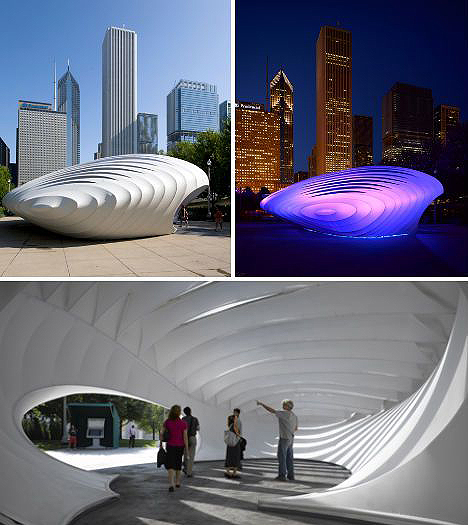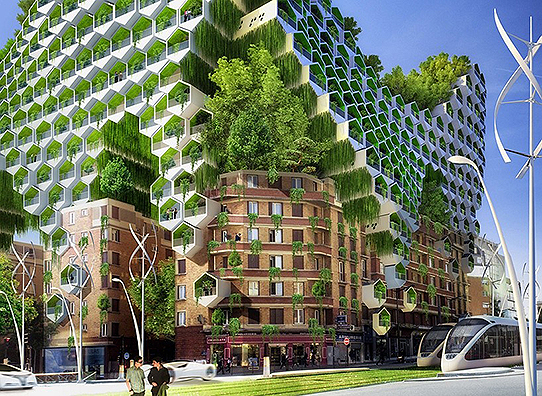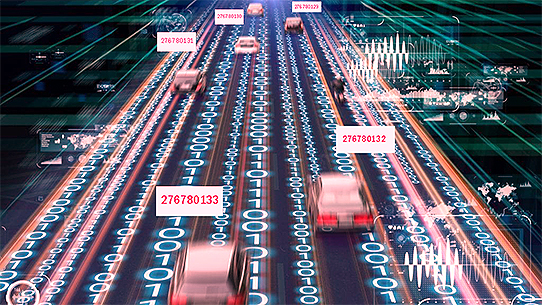«Publications of Project Participants»
Master Code

For many years, experts studying the work of Leonardo Da Vinci try to interpret his graphic image — Vitruvian Man. A huge number of versions and assumptions often leads us away from understanding the essence. This message the master could address to representatives of various sciences and professions, but we will evaluate this graphic rebus, from the point of view of the architect.
We have not one, but two people, and two completely different in terms of their capabilities and limitations. The first, «free» and unlimited in its movement in the circle. The second is «shackled» and bounded by the sides of the square. The degrees of freedom are there. A shackled person will not even be able to rise on his socks or raise his hands above his head in a rectangular volume. The man in the circle is not organic in any possible movement. Thus, simplifying the living space of man, we constrain its potential, imposing a form not corresponding to his nature. These limitations, which our master focuses on, most likely point to future changes in human evolution.
In our case, this is further proof that the human body has more freedom to develop in round and similar volumes than in its uncharacteristic nature rectangular and cubic forms.
Autonomy and benefit for society.

A huge number of residential cell projects are united by ideas of creating an autonomous dwelling. Human responsibility for the resources they consume stimulates the need to treat them carefully. In modern metropolitan areas connected to centralized networks, the level of water, electricity or gas consumption can be controlled only by changing the price component. This practice has already led to absurd inflections in the habits and behavior of people.
The careful attitude of everyone living to the common natural resources does not dominate the public consciousness.
At the same time, in an autonomous residential cell, a person independently plans the necessary options for saving or saving resources. If the modern economic model of society is set up to monopolize and further realize vital resources in the interests of the seller, the idea of autonomous housing is based on the principles of necessary sufficiency and reasonable distribution of surplus energy. For example, if your windmills or solar panels have generated more energy than is necessary for your living space, you can redistribute the surplus to a common network to accumulate or implement in public projects.
Your autonomy is a guarantee that if necessary, you will be able to get the necessary resources from the public reserves that you replenish, sharing surpluses.
This form of autonomous-social residence creates and stimulates a different level of responsibility of a person and strengthens his self-awareness in terms of relations with society.
Carefully treating the resources consumed and reproduced by him, a person evaluates his personal living space as an important element in the overall ecological system of the planet.
The idea of a transformable space.

When you have a large house, we realize that some of the rooms in it we do not use constantly, sometimes months do not go into empty rooms. When you live in a small space, on the contrary, one room carries several functional values. So the dining table can become your office, and the kitchen is a temporary workshop. Finding the perfect volume for a growing person or developing personality is not easy. Our creative interests may be larger than the volume in which we live, or so small that in large volume we limit ourselves only to a part of it. Computers, as multifunctional and compact devices for different types of tasks, do not fully solve this problem. We have to look for places of creative work application, such as offices, workshops or various clubs for interests.
And what if we make our home transformable depending on our interests and needs. The idea of a residential cocoon with a transformative volume in a fuller way can solve this problem.
Talking in the kitchen.

Talking to one of my acquaintances, a man far from architecture, I drew his attention to the idea of residential cells of egg-shaped form for a new form of resettlement of people.
His first reaction was a misunderstanding and doubt of the need for what it needed. The second question is why exactly this form and where to place such residential cocoons. Without waiting for the end of my explanation of why the form was chosen, he added the following:
-If I had such a cocoon I would place it on my site near the forest and connect it to geothermal sources of heat and other sources of energy, making the cocoon completely autonomous.
«You see,» I replied. And if you bought an apartment in a nearby high-rise, your first thought would be how, where and to whom and how much to pay for light and water.
Man always strive for autonomous and independent living in order to achieve his life goals. Even as a part of society, he wants to be a member of it with the rights to his own living space.
Where to stick the Trees.

Observing the trees as the most striking representatives of the plant world, the architect notices interesting features of these living organisms. In general, the tree consists of three main elements. Root system, trunk and crown. All three elements of a part of the same organism living in different environments and densities at the same time. Two radically different habitats — dense soil and air unites this living organism by means of another ubiquitous element — water. Looking at this process of living trees, we will notice that they are organisms connecting and uniting these environments. These heterogeneous in density and composition of our ecosystem cannot be mixed with something stable. Rooted in the soil and scattering crowns under the rays of sunlight in the air, they use water to mix incompatible elements in nature and create a favorable habitat for us.
Currently, architects in many of their projects use landscaping as the dominant idea of preserving the environment. There are projects of multi-storey buildings of the terrace device, where huge areas are pallets — greenhouses for plants. These projects look unusual and often attractive. They tend to focus on the resonance of people who are determined to preserve the environment who share the idea of taking care of nature. But if you understand the essence, it’s just houses for trees with difficult and expensive to operate architectural solutions. Another attempt to resettle a person in the floors of the urban environment is now projected on plants. Of course, plants can grow in pots and terraces of skyscrapers, they can recreate the microclimate in greenhouses and parks, but the main task of their life in nature will not be fully performed. The connection between the upper energy layers of the soil and the surrounding areas of the atmosphere will be partially disrupted and the trees will not be able to support the life of the inhabitants of this ecosystem fully. One of the main inhabitants of this ecosystem was and still is man.
City, Experience and Time.

Many people cannot find an answer to the question of the attractiveness of cities and urban lifestyles. Many express dissatisfaction with the state of infrastructure, gas and stress, but are not ready to consider the options for relocation. The comfort of living is no longer an undeniable argument in disputes. With modern materials, technologies and communications to create conditions for comfortable living can be not only in the city.
If a person is still looking for an answer, ask him a counter-question. What is the meaning of human life in this world? Man does not live for comfort, having children, starting a family, gaining knowledge, etc. The correct answer is that a person lives for the sake of life experience.
Experience is what we come to this world for, and this experience can be different. In one life, a person can get several chances, choosing the most acceptable model for him to get a certain experience.
As multi-cultural entities that combine different ethnic groups with their traditions and ways of life, cities are incomparably more attractive than monocultural settlements. Modern people of both sexes, who aspire to gain life experience, find more opportunities to get it in the environment of the modern city. The energies of people flocking to cities are further unwinding this flywheel of variety of options and choices.
If we regard the passage of time as a heterogeneous process, we can say that in the conditions of the city it accelerates. In a shorter period of time, a citizen can gain more experience than the inhabitant of rural settlements. In addition, the villager adjusts his internal clock to the natural time associated with the seasons, harvesting and work on the ground. For a resident of agglomerations, such binding is not essential and therefore his time is spent on other needs that the urban environment easily simulates for him. In the worlds of the future, we can solve the problem of urban overpopulation by creating the conditions for people to gain life experience, regardless of the types and places of their resettlement. By creating a new model of autonomous resettlement, providing it with an accessible information environment, fast and convenient transport communications, we will be able to remove from cities the burden of overpopulation. In this case, cities can become centers for creative development, social activism, cultural and educational activities of people, but without the need for permanent residence in them large groups of people.
The road is controlled by the car.

It seems that the device of modern highways lags behind the development of modern technologies and technological progress of mankind in other areas. This is even noticeable when compared with the evolution of auto transport. Our cars are filled with more and more technological innovations, navigation, distance control systems, object recognition — autopilots, etc. and our highways are only tols to collect money on their toll sites. Accidents and congestion have become a frequent occurrence on highways for various reasons.
Transport networks are congested even outside metropolitan areas, often for quite banal reasons. This is often a consequence of the fact that drivers have different degrees of training, temperament and manner of driving and use vehicles of different power. As a result, this leads to accidents, traffic jams, slowing down traffic.
For example, trains transport a large number of people over long distances, using automated traffic control systems, direct communication of the composition and railway line and control by the driver, why not give such functions to our highways, make them more automated and safe. Why, instead of filling people’s personal transport with complex autopilot systems, do not transfer this function to the space of the high-speed transport system. Imagine the road, leaving on which you pass control of your car to the central computer, calculating the maximum speed and safe distances to the moving in the flow of cars, thereby freeing you from heavy driving at high speed.
Personal transport will not disappear in the worlds of the future, it will be necessary to move people from their homes to places of application of work and leisure. People will use it on short and safe routes, but when they hit the expressways will connect to the systems of centralized flow management. Thus, the use of personal transport on high-speed tracks and for long-distance travel may be reconsidered.
The driver of the future will not use self-driving cars on sections of high-speed tracks designed to connect traffic flows between large metropolitan areas and labor application zones. Getting on these high-speed routes vehicle, become part of a single controlled flow. The flow excludes impractical overtaking, lane changes, and other dashing inherent in inexperienced or aggressive drivers, while the speed of safe movement is maintained at the maximum level of the controlled means.
At this time, the driver and passengers can use the journey time more rationally, without being distracted by driving or spending it in a sudden congestion.
Some time before going to the local road, the computer will offer the driver to switch to self-driving car and choose the most convenient scheme for the withdrawal of the vehicle to a safe exit from the automated track. Just too, there may be situations requiring an urgent stop or exit of the vehicle from the highway at the request of the driver or the breakdown of the car, with the central computer of the highway calculates the most convenient option for exiting the stream. In this case, you do not need automatic piloting systems with a complex object recognition system in each car, as this function will be taken over by the traffic control system on the entire length of the highway. This will make the roads of the future safe, fast, stress-free and fully manned.
The first fortresses began to colonize the environment.

For the Architect, the example of the aggressive type of colonization of the environment are the medieval castles and the cities of the fortress. Many of them later turned into historical centers of European cities known to us.
Surrounded by walls and ditches, they were clearly not an example of an attempt to unite man with the nature around him, but rather represent foreign and not organically introduced in the environment structures.
Isolation from the outside world was such an important task for their organizers that through the high walls and ditches with water did not penetrate not only their opponents, but even the ubiquitous plants. Many cities of the fortress to this day are devoid of vegetation and greenery stone labyrinths of narrow streets.
Such serfs could create a culture based on the ideology of fear and opposition. The idea of adapting with nature or peaceful coexistence with the tribes living next door, apparently not ruled by the minds of the organizers of these enclaves.
Historians will say that the first cities were created as fortresses to protect against external enemies. Who were these enemies and why to build their settlements among enemies. What kind of idea of coexistence had to be made dominant, whatever the issues of the world.
They were most likely afraid of raids of the same as they were aggressive colonizers from neighboring enclaves, which were part of the same behavioral model in the development of the territories.
Subsequently, many of their castles and fortresses began to grow into the homes of followers of this type of resettlement who adopted the way of life and rules of survival. Initially, small enclaves grew with a new structure, turning into cities known to us and changing the world that originally surrounded them.
What initially hid behind the high walls, dared, gained strength and went on the offensive.
***
To post your notes on the topic, send your texts to the post: